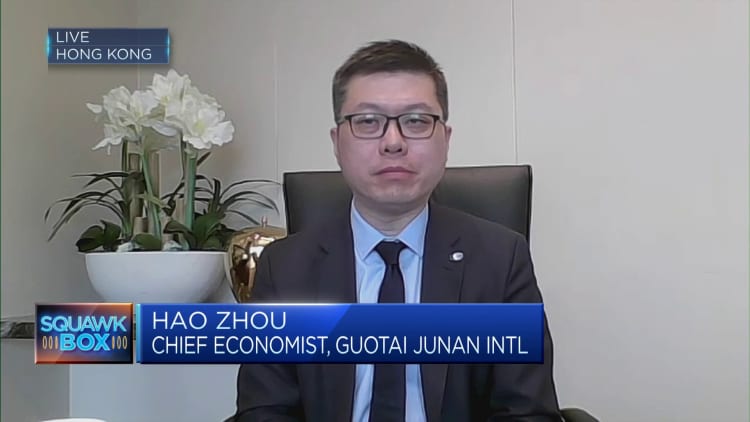China’s economic data for April broadly missed expectations as the economy continued to show an uneven path of recovery from the impact of its stringent Covid restrictions.
Industrial production for April rose by 5.6% year-on-year, compared to the 10.9% expected by economists surveyed in a Reuters poll. The figure was up 3.9% in March following a muted start to the year.
Retail sales rose by 18.4% – lower than economists’ forecast a surge of 21%.
Fixed asset investment rose by 4.7%, against expectations of 5.5%. The reading rose 5.1% the previous month.
“China is in the stage of recovering, compared to last year, the numbers are positive as we just saw, but is the recovery good enough for the market, is the recovery good enough to meet investors’ expectations – that’s the big question here,” BofA Securities China equity strategist Winnie Wu told CNBC’s “Street Signs Asia.”

WATCH NOW
VIDEO02:44
China’s post-Covid economic recovery losing speed since April: Economist
“It’s not good enough to meet with investors’ expectations – that’s a problem,” Wu said, adding that the momentum from China’s pent-up demand seems to be fading away.
“The recovery of income, of job security, and confidence will take time,” she said.
China stocks have pared most of the gains seen this year. The Shenzhen Component was down 4.67% quarter-to-date and up only 1.48% year-to-date, and notching a 9.5% drop from its peak in early February.

SHENZHEN SE COMPOSITE INDEX
*Data is delayed | Exchange | CNY
2,038.96
Last | 4:29 PM CTT
WATCHLIST+
China’s latest data follows a mixed picture in the country’s growth trajectory, with services remaining a bright spot in the economy despite factory data falling into contractionary territory in April.
The Caixin China general manufacturing purchasing managers’ index fell to 49.5 in April, marking the first reading below the 50-mark in three months. The 50-point mark separates growth from contraction.
The National Bureau of Statistics’ manufacturing PMI also fell to 49.2 in April from March’s reading of 51.9.
Imports for the month also plunged further by 7.9%, missing estimates – exports rose 8.5%.
Read more about China from CNBC Pro
Tesla vs. BYD: Here’s why one fund manager prefers the Buffett-backed automaker
These U.S. stocks have the most to lose — and gain — from China
“Market sentiment remains very weak in our client conversations,” Goldman Sachs economist Hui Shan wrote in a Sunday report.
She expects more measures from the government rather than a change in interest rates to improve market confidence.
“Symbolic measures that aim at boosting confidence, such as RRR cuts, seem more likely to us, especially around quarter-end when liquidity demand is high,” she wrote, referring to banks’ reserve requirement ratio — the amount of funds banks need to hold as reserves.
Record-high youth unemployment
The latest data included a 20.4% youth jobless rate, the unemployment rate between ages 16 and 24. The reading in April marked a record high.
“Many people, investors see this as a leading indicator. If the younger people are unable to get jobs, don’t have the income security, where is the confidence, where is the consumption recovery coming from?” said Wu.
She said the question of confidence is resonated in weakened markets sentiment as well as other high-frequency data, including new home sales.
Citi economists said youth unemployment “remains a headache” despite an overall steady labor market – the headline surveyed jobless rate dipped to 5.2% in April from 5.3% in March.
“With the graduate season approaching, the number could easily go up instead of going down,” Citi’s chief China economist Xiangrong Yu wrote in a Tuesday note.
Yu noted there is a likelihood of the government turning to “decisive” actions to boost the economy.
“With China now out of the sweet spot of reopening, hope of further sentiment repair could be diminishing in the absence of decisive government actions,” he wrote.
“We reckon that policymakers need to move from the wait-and-see mode to proactive easing and expect 20bps policy rate cut in the remainder of the year.”